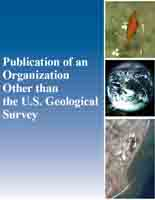Application of mercury stable isotopes to examine sources and hydrologic factors impacting mercury bioaccumulation and cycling in invertebrates of a model saline lake
Links
- More information: Publisher Index Page (via DOI)
- Open Access Version: Publisher Index Page
- Download citation as: RIS | Dublin Core
Abstract
Invertebrates, such as brine shrimp and brine flies, are key prey items for millions of resident and migratory birds that utilize saline lakes such as Great Salt Lake (GSL). Elevated methylmercury (MeHg) in invertebrate and waterfowl species of GSL has been assumed to be linked to elevated MeHg in GSL’s anoxic Deep Brine Layer (DBL) where aqueous concentrations can exceed 30 ng/L. Here, we leverage mercury (Hg) concentration and stable isotope measurements on brine flies (Ephydra hians and Ephydra cinerea), brine shrimp (Artemia franciscana), and spider (western spotted orbweaver [Neoscona oaxacensis]) to examine temporal changes in Hg concentrations and sources during periods of DBL presence and absence. Mercury concentrations in brine flies were inversely correlated with lake level and directly correlated with salinity, possibly resulting from factors such as enhanced Hg bioaccumulation due to osmoregulatory stress and stunted growth and/or elevated salinities impacting composition, abundance, and Hg concentrations of food sources. DBL presence did not correspond to higher invertebrate Hg concentrations, highlighting that the DBL is not the primary source of MeHg to biota. Hg stable isotope signatures (Δ199Hg and δ202Hg) in brine shrimp varied seasonally and indicated greater cumulative photochemical Hg loss from the water column in late summer and fall months. Co-located brine fly and western spotted orbweaver samples show equivalent Δ199Hg and δ202Hg signatures, supporting Hg transfer from the aquatic to terrestrial food webs. Furthermore, Hg isotope results (Δ200Hg) indicate that the majority of Hg accumulating in GSL invertebrates is of atmospheric origin. This study highlights temporal controls on Hg bioaccumulation within GSL, which will help assess Hg cycling within the system in response to management actions and declining lake levels.
Study Area
| Publication type | Article |
|---|---|
| Publication Subtype | Journal Article |
| Title | Application of mercury stable isotopes to examine sources and hydrologic factors impacting mercury bioaccumulation and cycling in invertebrates of a model saline lake |
| Series title | Water Research |
| DOI | 10.1016/j.watres.2025.123946 |
| Volume | 284 |
| Publication Date | June 10, 2025 |
| Year Published | 2025 |
| Language | English |
| Publisher | Elsevier |
| Contributing office(s) | Utah Water Science Center |
| Description | 123946, 11 p. |
| Country | United States |
| State | Utah |
| Other Geospatial | Great Salt Lake |


